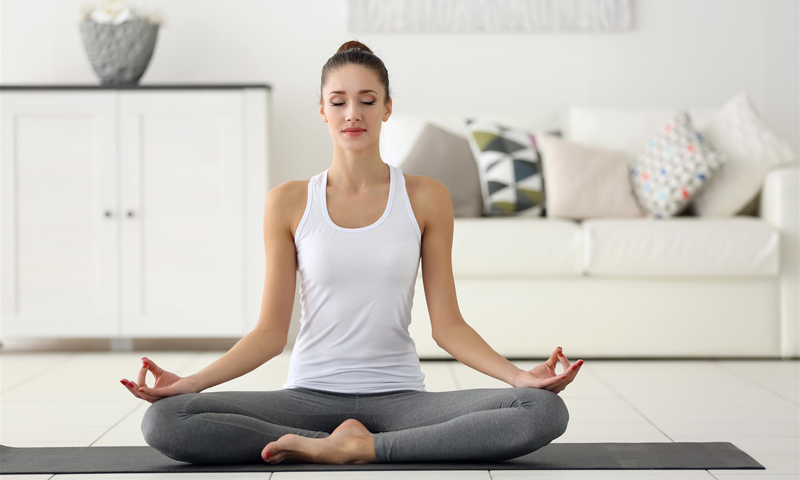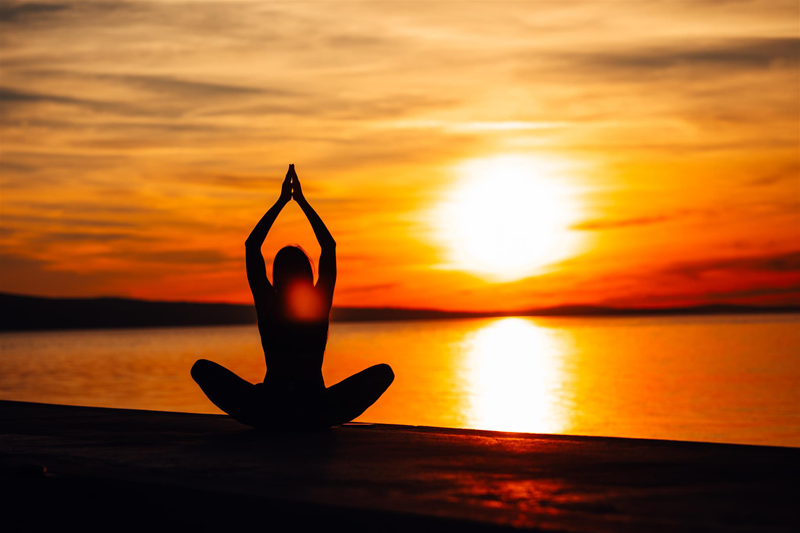
What is the Real Meaning of Yoga?
August 9, 2018
5 Myths About Meditation
August 23, 2018The Best Meditation Poses

When it comes to meditation, there are many different styles and techniques. However, most of them have one thing in common – the posture. While the styles of meditation may differ, each style uses a similar position to align the body and calm the mind. In addition to a comfortable position, it’s also important to wear comfortable clothing during meditation. A lightweight yoga vest a pair of yoga shorts will keep you comfortable and allow your body to oxygenate sufficiently. In this article, we explore the best meditation poses and how to practice them.
Things to Consider
Comfort
During meditation, you learn how to use mindfulness. During this process, you want to minimize all distractions to allow your mind to concentrate fully. Many yogis find that being uncomfortable is one of the largest distractions, so settling down in a comfortable position is essential.
Balance
As you settle into your practice, try to achieve a sense of stability and balance. You can find your balance by slowly swaying your body from side to side until you’ve found the position you feel most comfortable in. Once you’ve found your spot, try to keep your body still to maintain it.
Relaxation
To get the most from meditation, it’s important that your muscles aren’t tense. For most people, meditation should naturally release tension; however, it’s still worth checking in with your body after a few minutes to ensure your neck, back, and shoulder muscles aren’t tense. Your arms should be relaxed with your hands resting gently in your lap. If you’re new to meditation, try out a few leg positions before deciding which one feels the most comfortable. If you’re sitting on a cushion, support your knees with a blanket if they don’t touch the floor.
Alignment
Once you have found your favorite position, remember to keep your back as straight as possible. Some yogis find it helpful to imagine that their spine is made from a stack of coins. If you lean too much in a certain direction, imagine that the coins will fall over. This will help you to keep your back aligned throughout the meditation.

The Best Positions
The Burmese Position
If you decide to practice on a cushion or mat, as opposed to a chair, the Burmese Position may be right for you. To use this posture, start by taking a seat on a mat or cushion. Next, bend your legs with your left foot on the inside and your right foot on the outside and pull your feet in towards your pelvis. For best results, try to touch the tops of your feet on the mat.
The Lotus Position
Another popular meditation pose is the Lotus Position. There are three variations of this position: the quarter lotus, the half lotus, and the full lotus.
To use the quarter lotus, begin by sitting on a cushion or mat. Next, cross your legs by placing your right foot over your left calf. Finally, make sure your hips remain higher than your knees. You are in quarter lotus. To use the half lotus position, start in quarter lotus and then rest your right foot on your left thigh. The full lotus is a little tricker, but it shouldn’t take you long to get the hang of it. Start with your right foot on your left thigh before bringing your left foot up to your right thigh. Although it may feel tight, your body should become more flexible over time and the position will feel more natural. The best thing about the full lotus position is that it naturally encourages correct alignment. This will prevent tension, back pain, and headaches from occurring over time.
The Seiza Position
If you’d prefer to kneel whilst you meditate, try using the Seiza Position. Commonly used in Japan, this position is a Zen Buddhist meditation posture that is practiced kneeling on a mat. To take pressure off the knees and support your spine, try placing a cushion between your bottom and your calves.
Sitting on a Chair
Some practitioners prefer to sit on a chair whilst meditating. This can be particularly helpful if you struggle with flexibility, mobility, or have sore joints. Since this posture doesn’t strain the knees or legs, most practitioners should be able to use it fairly comfortably. For best results, sit on the chair with your back straight rather than slouched to promote correct alignment. Your feet should rest flat on the floor and be hip
-width apart. If possible, try to keep your hips slightly higher than your thighs by placing a thin cushion under your bottom or between the chair and your lower back.
Another great thing about this position is that you can use it subtly without attracting attention. Whether you’ve got a few spare minutes at work or on the daily commute, chair meditation can be practiced anywhere.
Corpse Pose
Corpse Pose is the asana practiced at the end of a yoga session. As well as being used as a restorative yoga pose, though, the position can be used to meditate. To use Corpse Pose, lie flat on your back facing the ceiling and rest your arms by the sides of your body. Finally, close your eyes and concentrate on your breathing. You are in Corpse Pose. This position can be beneficial for those who suffer from back pain as it naturally keeps the spine aligned. As it requires extra effort to stay awake when lying down, this position can naturally induce sleepiness. With this in mind, Corpse Pose may benefit those that suffer from insomnia.
In Summary
Whether you’re hoping to reduce stress or improve your concentration, meditation can help you to achieve your goal. When meditating, the most important thing to consider is your comfort. As long as you’re using a comfortable position and wearing a loose-fitting yoga top, you should be able to focus solely on your breathing and attain a clear mind.

